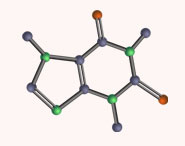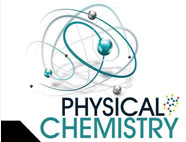


 علم الكيمياء
علم الكيمياء 
 الكيمياء التحليلية
الكيمياء التحليلية 
 الكيمياء الحياتية
الكيمياء الحياتية 
 الكيمياء العضوية
الكيمياء العضوية 
 الكيمياء الفيزيائية
الكيمياء الفيزيائية
 الكيمياء اللاعضوية
الكيمياء اللاعضوية 
 مواضيع اخرى في الكيمياء
مواضيع اخرى في الكيمياء
 الكيمياء الصناعية
الكيمياء الصناعية | Delocalization of the negative charge stabilizes the conjugate base |
|
|
|
أقرأ أيضاً
التاريخ: 1-10-2019
التاريخ: 10-7-2018
التاريخ: 9-10-2020
التاريخ: 5-1-2022
|
The acids HClO, HClO2, HClO3, and HClO4 have pKa values 7.5, 2, –1, and about –10, respectively. In each case the acidic proton is on an oxygen attached to chlorine, that is, we are removing a proton from the same environment in each case. Why then is perchloric acid, HClO4, some 17 orders of magnitude stronger in acidity than hypochlorous acid, HClO? Once the proton is removed, we end up with a negative charge on oxygen. For hypochlorous acid, this is localized on the one oxygen. With each successive oxygen, the charge can be more delocalized, and this makes the anion more stable. For example, with perchloric acid, the negative charge can be delocalized over all four oxygen atoms.
Looking at some organic acids, we might expect alcohols to have a pKa not far from that of water, and for ethanol that is correct (pKa 15.9). If we allow the charge in the conjugate base to be delocalized over two oxygen atoms, as in acetate, acetic acid is indeed a much stronger acid (pKa 4.8). The difference is huge: the conjugation makes acetic acid about 1010 times stronger.
It is even possible to have a negative charge of an organic acid delocalized over three atoms— as in the anions of the sulfonic acids. Methanesulfonic acid has a pKa of –1.9.
Even delocalization into a hydrocarbon part of the molecule increases acid strength. In phenol, PhOH, the OH group is directly attached to a benzene ring. On deprotonation, the negative charge can again be delocalized, not onto other oxygen atoms but into the aromatic ring itself. The effect of this is to stabilize the phenoxide anion relative to the conjugate base of cyclohexanol, where no delocalization is possible, and this is reflected in the pKa values of the two compounds: 10 for phenol but 16 for cyclohexanol.
So now we can expand our chart of acid and base strengths to include the important classes of alcohols, phenols, and carboxylic acids. They conveniently, and memorably, have pKa values of about 0 for the protonation of alcohols, about 5 for the deprotonation of carboxylic acids, about 10 for the deprotonation of phenols, and about 15 for the deprotonation of alcohols. The equilibria above each pKa shows that at approximately that pH, the two species each form 50% of the mixture. You can see that carboxylic acids are weak acids, alkoxide ions (RO−) are strong bases, and that it will need a strong acid to protonate an alcohol.
If we need to make the anion of a phenol, a base such as NaOH will be good enough, but if we want to make an anion from an alcohol, we need a stronger base. Vogel (p. 986) suggests potassium carbonate (K2CO3) is strong enough to make an ether from phenol. The base strength of carbonate anion is about the same as that of phenoxide ion (PhO−) so the two will be in equilibrium but enough phenoxide ion will be present for the reaction.
On the other hand, if we want to make the OH group into a good leaving group, we need to protonate it and a very strong acid will be needed. Sulfuric acid is used to make ethers from alcohols. Protonation of the OH groups leads to loss of water and formation of a cation. This reacts with more alcohol to give the ether. There is another example of this reaction in Chapter 5.



|
|
|
|
لشعر لامع وكثيف وصحي.. وصفة تكشف "سرا آسيويا" قديما
|
|
|
|
|
|
|
كيفية الحفاظ على فرامل السيارة لضمان الأمان المثالي
|
|
|
|
|
|
|
قسم التربية والتعليم يطلق الامتحانات النهائية لمتعلِّمات مجموعة العميد التربوية للبنات
|
|
|